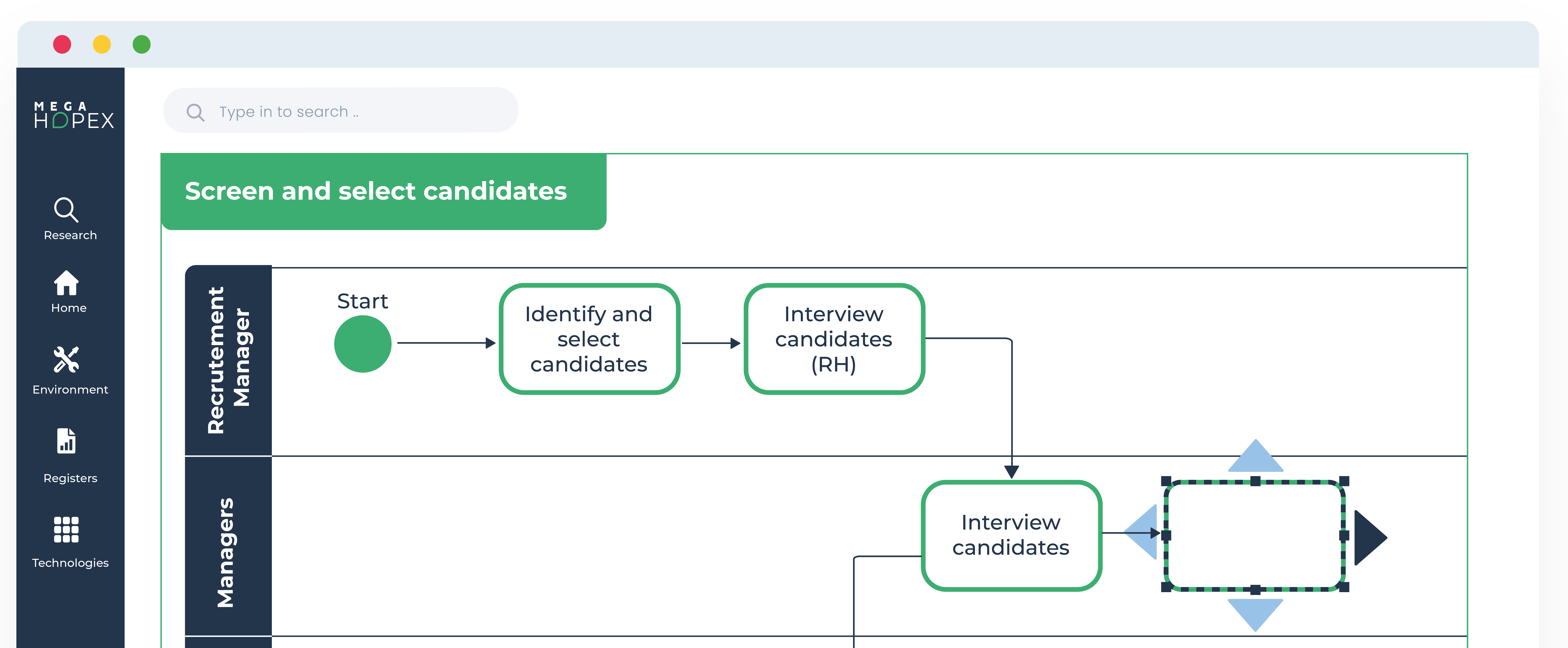
Business Process Optimization
Business Process Optimization (BPO) – a strategy that has become increasingly essential in today's dynamic business landscape. Whether you're a small business owner, a manager in a large corporation, or simply someone intrigued by organizational efficiency, this article is designed to provide valuable insights into the world of BPO.
In the following sections, we will explore BPO, why it's essential, and how it can transform your organization's operations. We’ll explore the steps involved in implementing BPO, the challenges you might face, and the remarkable benefits it can bring to your business.
What is Business Process Optimization?
Business Process Optimization is the strategy to improve a business's efficiency, cost-effectiveness, and overall performance by analyzing and enhancing its existing processes. It involves identifying areas for improvement and implementing changes to streamline operations. This approach aims to maximize productivity, minimize waste, and drive better organizational results.
- Identification of Processes: The first step in BPO is identifying the processes that need optimization. These can be core business processes, supporting processes, or management processes.
- Analysis and Measurement: After identifying the processes, the next step is to analyze them in detail. This includes understanding the current workflow, identifying bottlenecks or inefficiencies, and measuring recent performance against various metrics like time, cost, and quality.
- Process Redesign and Improvement: Based on the analysis, processes are redesigned to eliminate inefficiencies. This can involve simplifying steps, automating tasks, integrating technology solutions, or reorganizing workflow. The aim is to create a more streamlined and efficient process.
- Implementation: The redesigned process is then implemented. This stage often requires change management strategies to ensure smooth adoption by all stakeholders.
Continuous Monitoring and Evaluation: After implementation, the process is continuously monitored to evaluate its effectiveness. Key performance indicators (KPIs) are used to measure success and identify areas for further improvement. - Feedback and Iterative Improvement: BPO is an ongoing process. Regular feedback is gathered, and the process is refined and optimized cyclically and iteratively.
Business Process Optimization aims to align processes with strategic goals, adding value to the business and enhancing customer satisfaction. It's about working smarter, not just more complex, and leveraging resources most effectively.
How Can Process Optimization Benefit Your Company?
Process optimization can bring a multitude of benefits. Here's how it can be advantageous in various aspects of business operations:
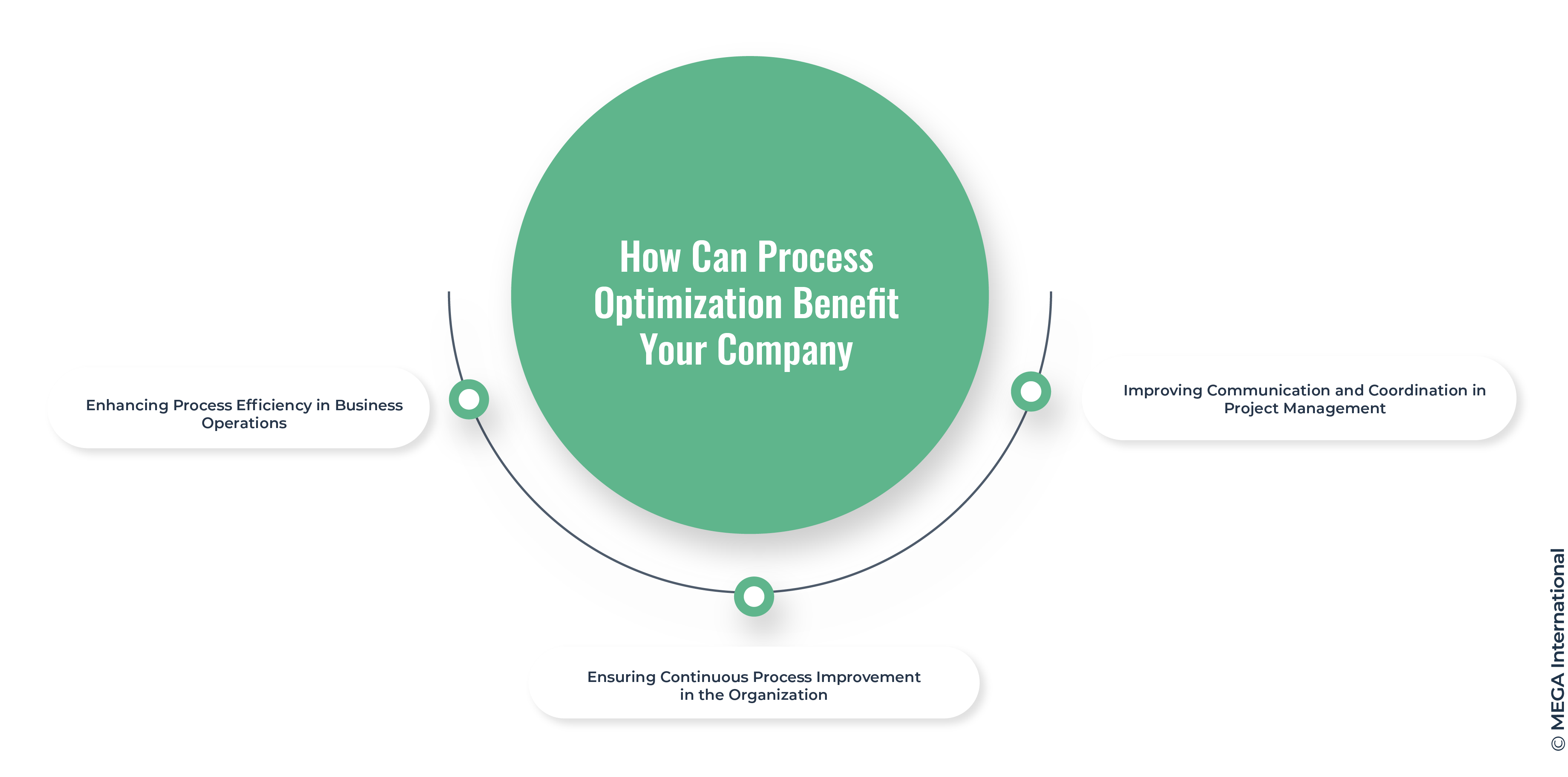
Enhancing Process Efficiency in Business Operations:
- Increased Productivity: Streamlining processes eliminates unnecessary steps, reducing the time and effort required to complete tasks.
- Cost Reduction: Optimized processes often lower operational costs by reducing waste, minimizing errors, and improving resource utilization.
- Quality Improvement: Consistent and streamlined processes typically produce more reliable and higher quality outcomes, enhancing product or service quality.
Ensuring Continuous Process Improvement in the Organization:
- Establish a Culture of Continuous Improvement: Encourage employees to identify areas for improvement regularly.
- Use of Metrics and KPIs: Regularly measure process performance to identify improvement opportunities.
- Employee Training and Engagement: Educate and involve employees in process improvement initiatives.
Improving Communication and Coordination in Project Management:
- Improved Project Outcomes: By applying process optimization in project management, projects can be completed more efficiently, within budget, and with fewer errors.
- Enhanced Collaboration: Streamlining project-related processes improves communication and coordination among team members.
- Predictable Project Delivery: Optimization provides a structured approach to project management, making outcomes more predictable and reliable.
Process optimization can significantly enhance a company's operational efficiency, reduce costs, improve quality, and increase customer satisfaction. It requires a strategic approach, continuous monitoring, and an organizational culture that embraces change and constant improvement.
How to Implement Business Process Optimization
Implementing Business Process Optimization (BPO) in a company involves a structured approach that aligns with the organization's strategic goals. Here are the key steps:
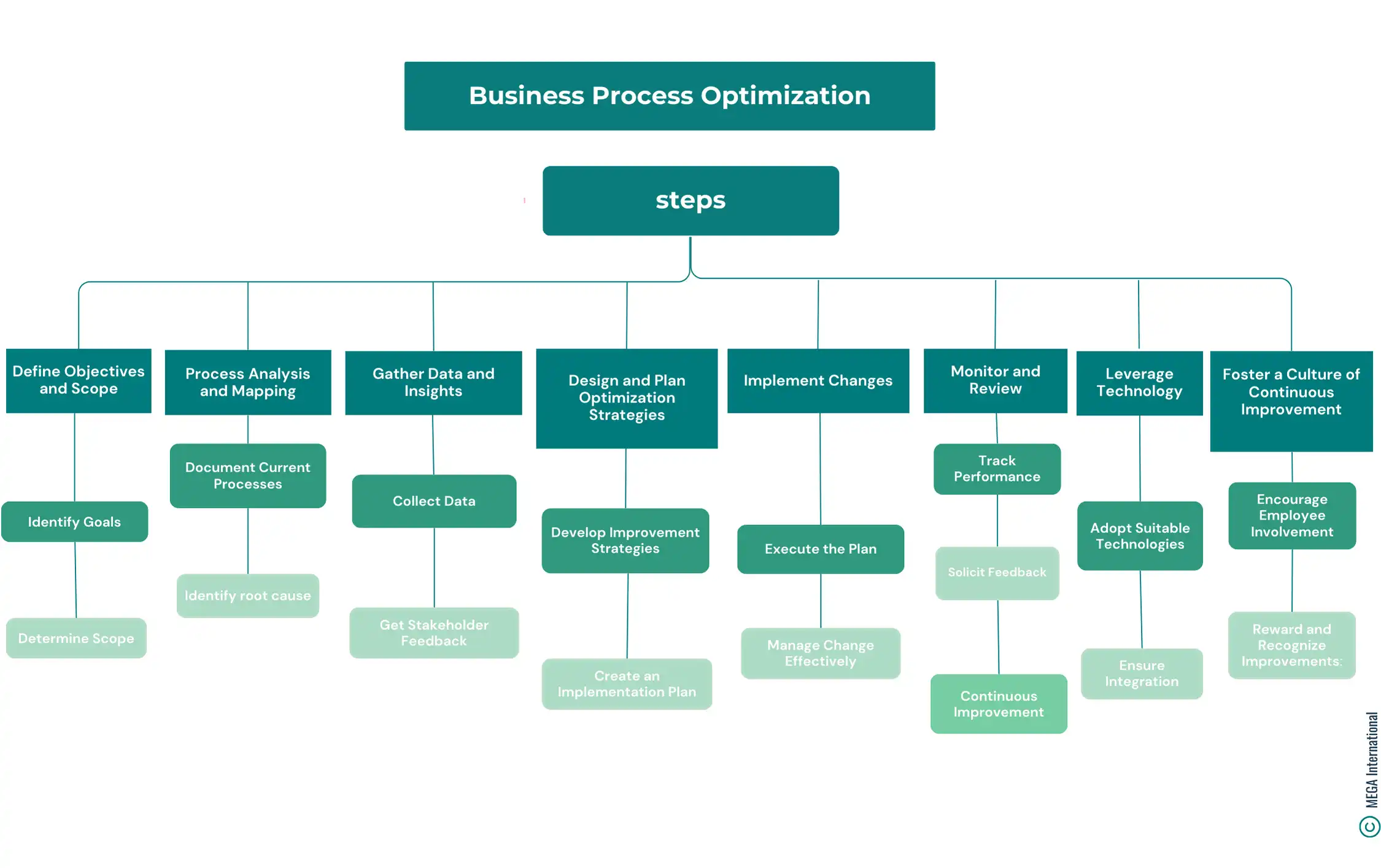
Define Objectives and Scope:
- Identify Goals: Clearly define what you hope to achieve with process optimization, such as cost reduction, efficiency improvements, or quality enhancement.
- Determine Scope: Decide which processes are to be optimized. Start with processes that have the most significant impact on your business objectives.
Process Analysis and Mapping:
- Document Current Processes: Create detailed maps or flowcharts of existing processes to identify bottlenecks or redundancies.
- Identify root cause: Investigate underlying reasons for inefficiencies, using comparison with industry best practices.
Gather Data and Insights:
- Collect Data: Gather quantitative data on process performance, such as time taken, costs incurred, and error rates.
- Get Stakeholder Feedback: Involve employees, customers, and other stakeholders to gain insights into process effectiveness and areas needing improvement.
Design and Plan Optimization Strategies:
- Develop Improvement Strategies: Using your analysis, devise strategies to streamline and improve the processes. This could include automation, resequencing steps, eliminating unnecessary tasks, etc.
- Create an Implementation Plan: Develop a detailed plan for implementing these changes, including timelines, resources needed, and responsible parties.
Implement Changes:
- Execute the Plan: Roll out the optimization changes according to your plan. This may be done in phases, especially for large-scale changes.
- Manage Change Effectively: Ensure clear communication and training for all stakeholders affected by the new processes. Address resistance and provide support during the transition.
Monitor and Review:
- Track Performance: Use KPIs and metrics to monitor the performance of the optimized processes.
- Solicit Feedback: Regularly get feedback from process users to understand the impact of the changes.
- Continuous Improvement: Be prepared to make further adjustments. Optimization is an ongoing process, not a one-time event.
Leverage Technology:
- Adopt Suitable Technologies: Implement technology solutions like process modeling and mining, workflow automation, AI, or data analytics tools to enhance process efficiency.
- Ensure Integration: Ensure new technologies are well integrated with existing systems and processes.
Foster a Culture of Continuous Improvement:
- Encourage Employee Involvement: Involve employees at all levels in the optimization process. This encourages a culture of continuous improvement and innovation.
- Reward and Recognize Improvements: Acknowledge and reward contributions to process improvements.
READ: Business Process Mapping in SOX Compliance
It's essential to align process optimization efforts with overall business objectives to ensure that they contribute to the organization's success.
Measuring the Success of Business Process Optimization
KPIs for Process Efficiency
Key Performance Indicators (KPIs) such as cycle time, cost, resource utilization, and process throughput can be used to measure the efficiency gains achieved through business process optimization, providing insights into the impact of the optimization efforts.
Impact on Business Performance
Businesses can assess the impact of process optimization on their overall performance metrics, such as revenue growth, customer satisfaction levels, and market share, to gauge the effectiveness of the optimization initiatives.
Feedback and Continuous Optimization
Soliciting feedback from stakeholders and employees and incorporating their input into the optimization process is crucial for continuous improvement. Regular feedback loops enable businesses to adapt and refine their optimization strategies based on real-time insights.
Factors to Consider in Business Process Optimization Projects
When undertaking Business Process Optimization (BPO) projects, it's crucial to consider several vital factors, understand the various roles and responsibilities, and recognize the potential impact on business operations. Here's a detailed look at each aspect:
Key Factors to Consider in Business Process Optimization Projects:
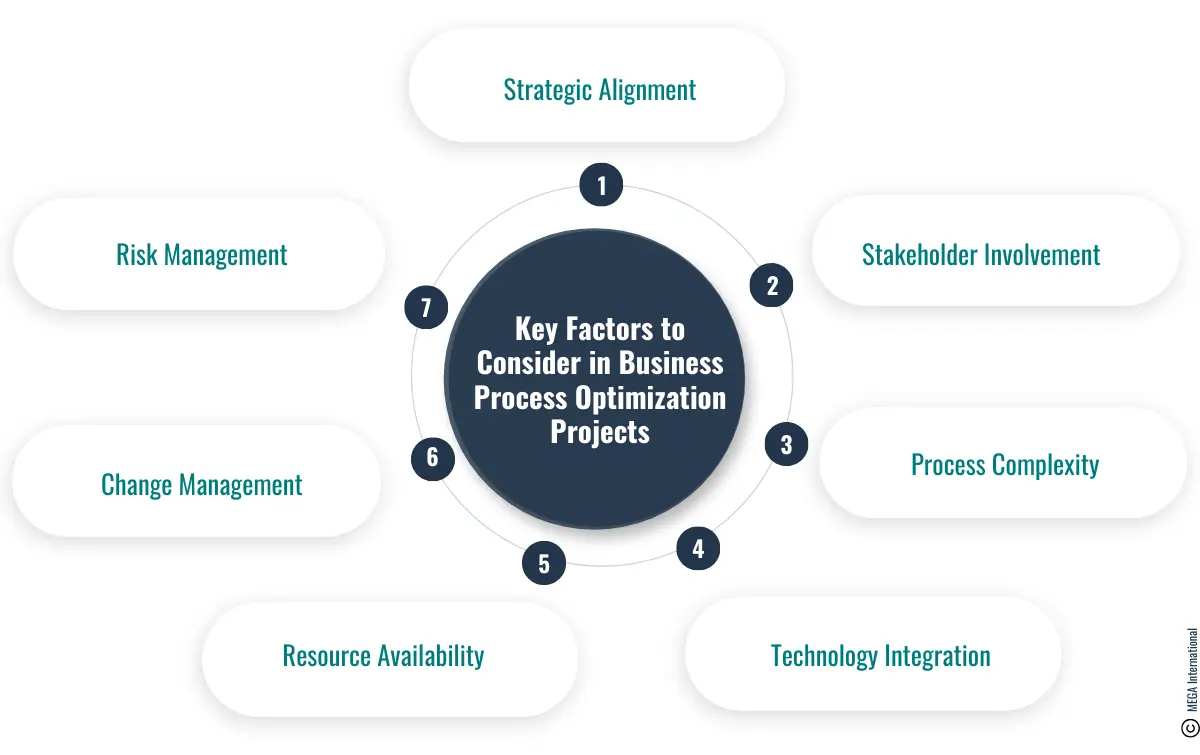
- Strategic Alignment: Ensure the optimization aligns with the business strategy and objectives.
- Stakeholder Involvement: Engage all relevant stakeholders, including management, employees, and customers, to gather diverse perspectives.
- Process Complexity: Understand the complexity of processes and the challenges they may present during optimization.
- Technology Integration: Consider the role of technology and how it can be leveraged to automate and streamline processes.
- Resource Availability: Assess the availability of resources, including budget, personnel, and technology.
- Change Management: Plan for the human side of change, ensuring clear communication and training for those affected by new processes.
- Risk Management: Identify potential risks associated with the optimization project and develop mitigation strategies.
Roles and Responsibilities in Business Process Optimization Projects:
- Project Sponsor: Provides overall direction, resources, and support for the project.
- Project Manager: Oversees the project execution, from planning to implementation.
- Process Owner: Responsible for optimizing the specific process's end-to-end management.
- Business Analysts: Analyze existing processes and propose improvements.
- IT Specialists: Provide technical support for technology integration.
- Change Management Specialist: Facilitates smooth adoption of new processes within the organization.
- Quality Assurance Team: Ensures that the optimized processes meet quality standards.
Techniques used in Optimization Projects:
- Lean Methodology: Focuses on eliminating waste within processes.
- Six Sigma: Aims at reducing process variation and improving quality.
- Data analytics: Understand process performance and identify improvement areas.
- Automation: Applying automation (RPA) and AI for repetitive and time-consuming tasks.
- Continuous Feedback Loops: Regularly collecting and acting on feedback ensures processes stay relevant and efficient.
Integrating New Processes with Existing Operations for Optimization:
- Carefully plan the integration to minimize disruption to existing operations.
- Ensure that the new processes are compatible with and complementary to existing workflows.
- Provide comprehensive training to employees for a smooth transition.
Examples of Business Process Optimization in Organizations:
- Many companies have successfully implemented BPO, leading to significant improvements. For instance, some manufacturing companies implement Lean techniques to reduce waste and improve production efficiency, one of the most well-known examples being Toyota.
- Service-oriented businesses, like banks or retail companies, often use process optimization to enhance customer service and operational efficiency.
- Technology companies employ BPO to streamline software development processes, reducing time-to-market for new products.
READ: Business Process Compliance
Business Process Optimization projects require careful planning, consideration of various factors, a clear understanding of roles and responsibilities, and an awareness of the impact on business operations.
Challenges in business process optimization
Business Process Optimization (BPO), while offering significant benefits, also comes with its challenges. These challenges can vary depending on the complexity of the processes, the size of the organization, and the specific goals of the BPO initiative. Some common challenges include:
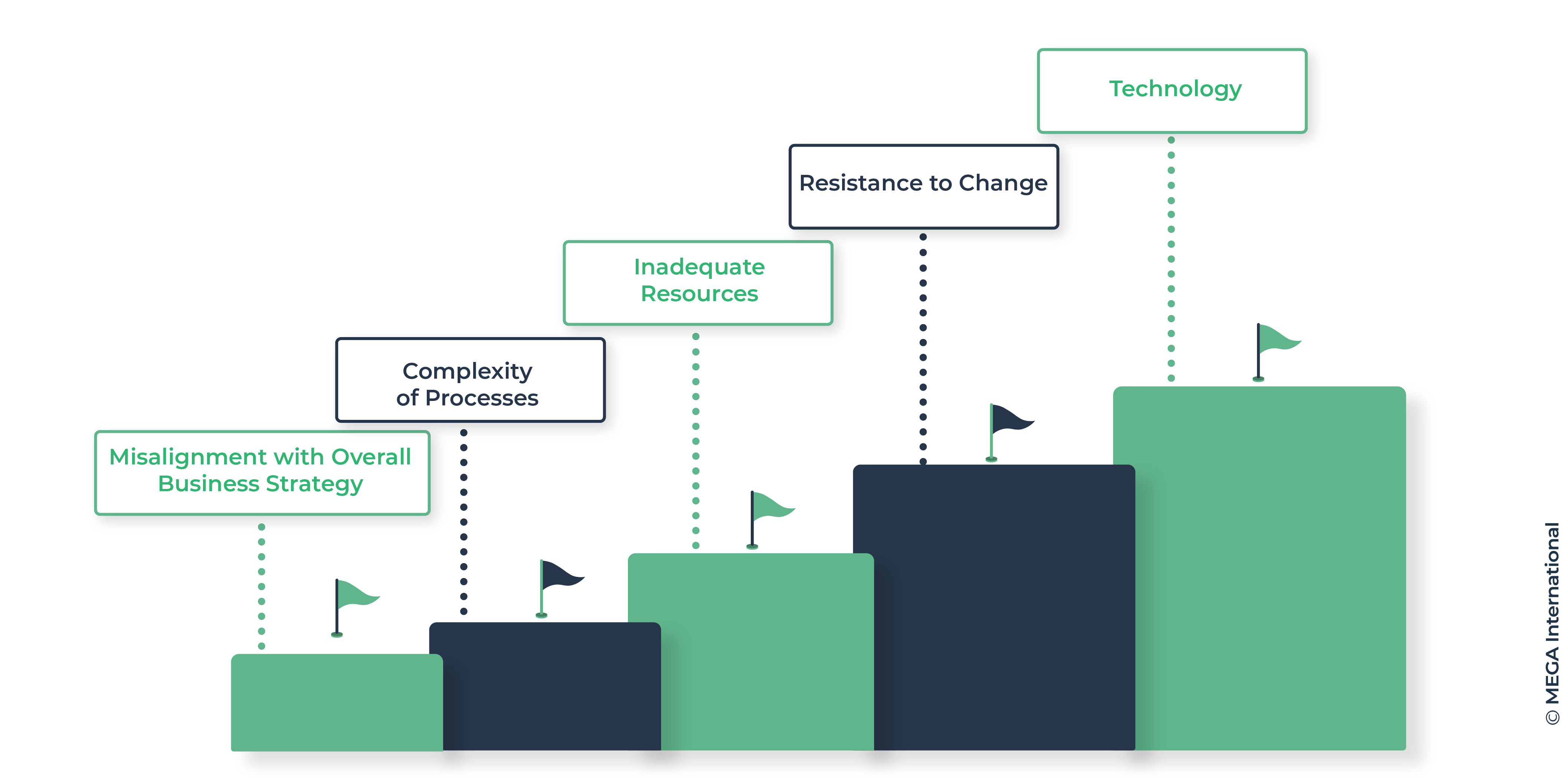
Misalignment with Overall Business Strategy
- BPO efforts might fail to deliver the expected results if not aligned with the company's broader strategic objectives.
- Alignment with business goals and regular reviews to ensure consistency with strategic objectives are essential.
Complexity of Processes
- Some business processes can be extremely complex and interdependent, making them challenging to analyze and optimize.
- A detailed understanding of these processes and phased implementation of changes can help manage complexity.
Inadequate Resources
- Limited budget, time constraints, and insufficient personnel can hinder the implementation of BPO.
- Proper planning and prioritization are essential to manage resources effectively.
Resistance to Change
- Employees may resist routine changes or fear optimization efforts might lead to job cuts.
- Overcoming this requires effective communication, involving employees in the process, and demonstrating the benefits of change.
Technology Challenges
- Integrating new technology can be complex, and existing IT infrastructure may not support new process requirements.
- Careful selection of technology and ensuring compatibility with existing systems is crucial.
Addressing these challenges requires a balanced approach, involving strategic planning, effective communication, stakeholder engagement, and a strong focus on the goals and benefits of BPO.
Summary
Business Process Optimization (BPO) is a vital strategy for any organization looking to enhance operational efficiency, reduce costs, and improve overall business performance. The key to successful BPO lies in aligning the optimization efforts with the organization's strategic objectives, effectively managing change, leveraging appropriate technology, and fostering a culture of continuous improvement. Through stakeholder engagement and a focus on data-driven decision-making, BPO streamlines operations and positions organizations to be more adaptable and competitive in a rapidly changing business environment.
FAQs
Process optimization is essential for businesses to stay competitive and adapt to evolving market conditions. By continuously refining their business processes, organizations can lower costs, enhance customer satisfaction, and boost productivity, ultimately leading to improved profitability and sustainability.
To implement business process optimization effectively, start by analyzing your current processes and identifying areas for improvement. Utilize process improvement methodologies, such as process mapping and lean optimization techniques, to streamline operations and eliminate process inefficiencies. Engage key stakeholders and empower employees to drive optimization efforts across the organization.
A business process optimization project may be necessary when your existing processes fail to meet performance expectations, or new challenges require a fresh approach. Often, organizations undertake such projects as part of broader process automation initiatives or in response to evolving market demands.
Optimization leads to improved productivity, reduced costs, better customer experiences, and increased competitiveness.
No, optimization is an ongoing journey. Markets and technologies evolve, requiring companies to refine their processes regularly.
Technology provides tools for data analysis, automation, and predictive insights that drive informed decision-making in optimization efforts.
It's vital to ensure optimized processes comply with industry regulations and standards to avoid potential risks.
Reduce IT complexity and costs while supporting business innovation

Support fast-changing business needs and innovation with a well-designed application portfolio management solution.
Related Content to Business Process Management
Get a clear understanding of how your operation runs, identify areas of improvement, and build scenarios to optimize and transform business processes;
MEGA HOPEX for BPM
Request a demonstration of HOPEX for BPM, and see how you can have immediate value of your projects.








